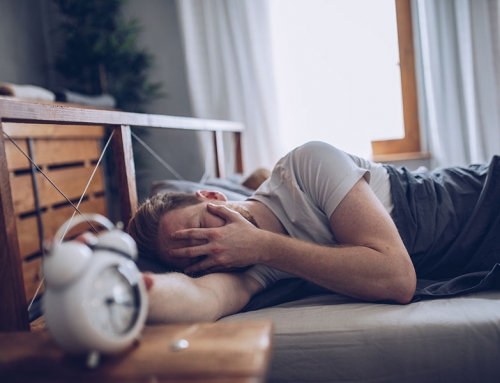For many of us, neck pain is a common daily complaint—but how often do you stop to consider what is behind neck pain when you wake up? Better still, what steps you can take to reduce or solve it?
Why is morning neck pain so common?
Even if it’s just a mild ache, the chances are that you’ve experienced morning neck pain at some point in your life. Most neck pain is caused by improper posture while sleeping, which itself is normally a symptom of your sleep setup.
While your mattress is likely the biggest investment in your bedtime routine, your pillow is an important and often neglected component of a good night’s sleep. According to Harvard Medical School, the path to regular neck pain upon waking begins with a lack of awareness about how your head, neck, and back are resting on your pillow.
What does ‘bad pillow posture’ look like?
Putting pressure on your upper back, shoulders, and spine increases the risk of neck injury and pain. The worst position for spinal pressure is—perhaps counterintuitively—sleeping on your stomach. This is because your back is forced to arch, while your neck has to spend the entire night turned to one side.
Unfortunately, the way sleep is often determined by early-life habits, so if you are a stomach sleeper, you may not be inclined to switch things up. The University of Rochester recommends that stomach sleepers use a flat pillow, placed under the hips to help address arching and pressure. Likewise, opt for a head pillow that’s low and flat, or perhaps no pillow at all.
Bad pillow posture also has a vicious cycle relationship with sleep itself. Studies have confirmed that the less sleep you get, the more that neck pain can become an issue. (Likewise, the more neck pain you have, the less sleep you’re likely to get!) A study in the Journal of Clinical Sleep Medicine also found that associations between sleep quality and chronic neck pain can be confounded by a genetic predisposition to neck injury.
 What does ‘good pillow posture’ look like?
What does ‘good pillow posture’ look like?
There are two main sleeping positions widely regarded as neck-friendly. These are sleeping on your side, and sleeping on your back. These postures promote the most neutral alignment of the neck and spine—so long as your pillow is not messing with that balance! A stiff pillow can keep the neck tensed during the night, however good your posture.
Back sleepers should bear in mind that the neck might be overextended if your pillow is too high, so go for a pillow that follows the natural curve of your neck. For a super-supportive fit, try adding a small neck roll pillow into your pillowcase, along with a regular flat pillow (or purchase a bespoke orthopedic pillow that combines the two).
For side sleepers, you’re looking a neutral alignment all the way from the top of the head down to the hips. Everyday Health recommends the following quick test for striking that balance: the right pillow will just fill the space between your ear and your mattress, without tilting your head.
Good pillow posture also extends to good posture more generally. With the average head weighing around eleven pounds, a strong core will help to keep the spine, neck, and shoulders aligned. The better support your head and neck receive throughout the day, the less likely you’ll go to bed with weakened or fragile muscles.
Pillow types
When was the last time you replaced your pillow? If you can’t remember, it’s time for a new one!
Feather pillow: feather pillows are loved by some, and hated by others. This is often because people keep them for long after their intended use time. While they only last around a year or so, feather pillows do an excellent job of conforming to the shape of your head and neck.
Memory foam pillow: memory foam pillows are engineered to perform the function of feather pillows, but they last much longer and most don’t use animal products.
Horseshoe pillow: you’ll most often see these pillows during the daytime, as they’ve become popular for taking on public transport. (Some people also recommend their use when relaxing at home). The idea of a horseshoe-shaped pillow is to support your neck without disrupting that all-important neutral alignment. can support your neck and prevent your head from dropping to one side if you doze.
Cervical pillows: cervical pillows are tubular, roll-shaped pillows. They’re intended specifically for the neck, to reduce pressure and thereby relieve any stress on the muscles while you sleep.
Orthopedic pillow: These are pillows that are designed to maintain the natural curve of your neck—but do they work? The studies are mixed. For example, this study by the Journal on Advances in Physiotherapy found that two of three tested orthopedic pillows scored no higher than a regular pillow when judged by people with chronic non-specific neck pain.
Experiencing neck pain right now? Try some (cautious) neck stretches.
WebMD recommends the following stretches for those experiencing stiffness or soreness in the neck and shoulders. Importantly, if you experience any additional pain or sharpness while stretching, then stop immediately! If pain persists for multiple days, consider a consultation with a healthcare professional.
Neck stretch: in a neutral, relaxed pose, push your chin forward in order to stretch the throat. Hold and then return to the starting position. Next, push your chin backward to stretch the back of the neck. Hold and return to the starting position. Repeat five times.
Neck tilt: while sitting, let your head fall so that chin touches your chest. Hold and return to the starting position. Repeat five times.
Side-to-side neck tilt: start from a neutral position, then tilt your neck toward one shoulder, leading with your ear. Hold and return to the starting position, before repeating on the opposite side.
Neck Turn: looking straight ahead, turn your head to the side, concentrating on keeping your chin level. Don’t hold. Return to looking straight ahead before repeating on the opposite side.
Summary
- If you’re suffering from neck pain in the mornings, it’s time to take a good look at your pillow.
- The best pillows support the natural curve of your neck, without pushing your head out of alignment. But if you’re a stomach sleeper, you might be better off without a pillow at all.
- Stretching is a must for those with stiffness. Use the recommended guidelines and don’t overdo it. Even better—increase your core strength to help your neck stay aligned throughout the day.





